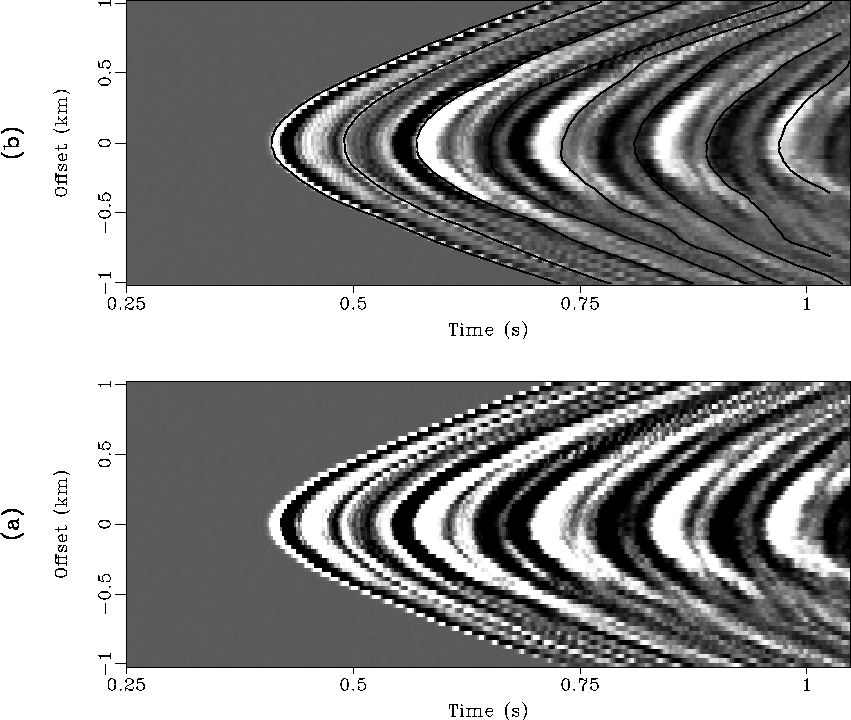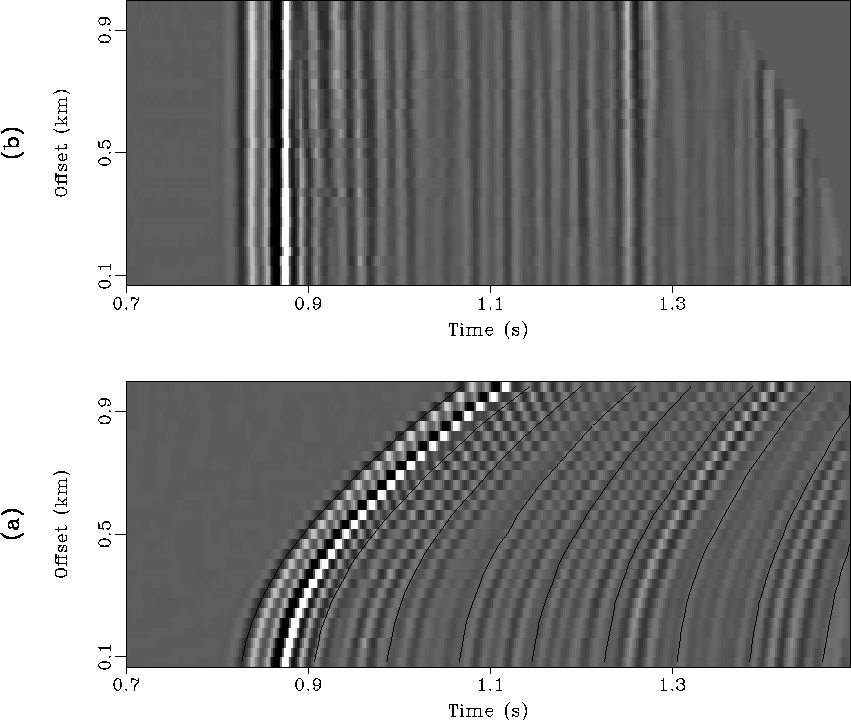




Next: CONCLUSIONS
Up: EXAMPLES
Previous: Synthetic data
We will show two field-data examples. First, let us look at a common
receiver gather recorded in a Walk-Away marine survey.
The gather is displayed in Figure 6a. This gather is
collected with many shots on the surface and a common receiver down into a well.
The first arrival and several events that follow it are down-going waves.
These events are strong and are expected to be picked correctly. After
0.75 seconds, the up-going waves reflected from a deep subsurface start
to interfere with the down-going waves. We are curious to know the results
of our algorithm when events intersect. Figure 6b shows
the result of picking. The picked curves are overlain directly on the data.
We see that the algorithm picks the first arrival and several early arrivals
quite well. Carefully looking at the picked curve for the first arrival, we
see that a ``pull-down'' of the first arrival at offset -0.6 km is correctly
picked. This ``pull-down'' probably is caused by a low velocity anomaly
of the medium. This observation proves the high resolution and high
accuracy of our algorithm.
At the lower-left corner of Figure 6, events interfere with one
another. We see that the picked curves more or less follow the relatively
strong events. Since this situation violates our assumption, we do not
expect to have good picking. The same thing happens at offset 0.7 km and arrival
time 0.76 sec, where two events merge to one.
Our second example uses a common midpoint (CMP) gather. We want to demonstrate the power of
our algorithm for moveout corrections. In Figure 7a, we show
this CMP gather together with the picked curves. The events between the
second and third picked curves are strongly aliased at far offset.
The result of moveout correction is show in Figure 7b.
We see that events are flattened nicely. To compare our method with normal
moveout (NMO) corrections, we apply two methods to the same CMP gather. The results,
displayed in Figure 8, are similar except that
NMO correction makes the wavelet stretch out at far offset
whereas our method does not.
In this example, the method described in this paper gives good result because
the signal-to-noise ratio of data is high. When noises are strong, NMO will
give better result than does our method.
vsppick
Figure 6 An example of event-picking with a field data: (a) a common receiver gather
from a Walk-Away marine seismic survey; (b) the result of event-picking.
 cmppick
cmppick
Figure 7 An example of moveout correction with a field data: (a) a CMP gather
from a marine seismic survey; (b) the result of moveout correction.
 cmpnmo
cmpnmo
Figure 8 Comparison of two methods on moveout corrections: (a) our method; (b) NMO.






Next: CONCLUSIONS
Up: EXAMPLES
Previous: Synthetic data
Stanford Exploration Project
1/13/1998



